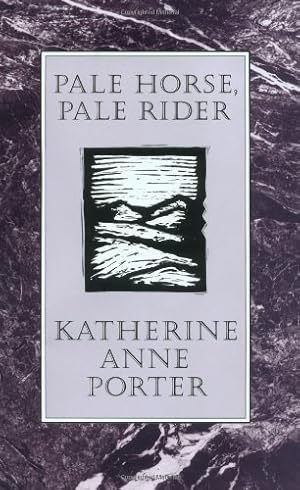Granite walls, whirpools, stars are things. None of them is death, nor the image of it. Death is death, said Miranda, and for the dead it has no attributes. Silenced she sank easily through deeps under deeps of darkness until she lay like a stone at the farthest bottom of life, knowing herself to be blind, deaf, speechless, no longer aware of the members of her own body, entirely withdrawn from all human concerns, yet alive with a particular lucidity and coherence; all notions of the mind, the reasonable inquires of doubt, all ties of blood and the desires of the heart, dissolved and fell away from her, and there remained of her only a minute fiercely burning particle of being that knew itself alone, that relied on nothing beyond itself for its strength; not susceptible to any appeal or inducement, being itself composed entirely of one single motive, the stubborn will to live. This fiery motionless particle set itself unaided to resist destruction, to survive and to be in its own madness of being, motiveless and planless beyond that one essential end. Trust me, the hard unwinking angry point of light said. Trust me. I stay.
In the title novella of Pale Horse, Pale Rider, Miranda is a young small-town journalist who's sick of World War I. Suited thugs show up at her newsroom to berate her for being the only one there not to buy Liberty Bonds; before the third act of a play (she's a theater critic), the entire cast sings propaganda songs about the Hun in front of an oversized flag. But more importantly, she's recently begun to see Adam, who is about to enter the army, and the certainty of Adam's violent death casts a pall over everything. Their relationship, too young to turn to sentimentality, takes on a heedless and ironic cast; it becomes a long mordant joke.
But the real enemy in "Pale Horse, Pale Rider" isn't the war: it's the Spanish Flu. Miranda feels constantly "off," a sensation that's enmeshed with her expectation of doom for herself and Adam, but it's not just existential; she really is sick. When the flu begins to ravage her, Adam takes care of her, but she recedes into a foggy world of sickness. This extended scene, in which Porter captures the associative, illogical, luminous feeling of sickness, is some really bravura writing; just look at the passage quoted above. Sickness pares away everything: work, love, even the self, or the things that we believe are the self, leaving behind the "hard unwinking angry point of life" that is ourselves unmediated. When she comes out of the fog, Miranda learns that Adam has died of the flu while at base camp, though it seems almost certain that she's the one that gave it to him.
What's it like to read "Pale Horse, Pale Rider" in a pandemic? Unlike The Plague, where the doctor stands at arm's length from the psyche of the sick, it gives the reader a persuasive sense of what it really must be like to be badly sick. I haven't read anything like it. But there's something recognizable, too, in the way that the whole world around Miranda is so wrapped up in war that there is no time or thought for sickness. Our social order is arranged to conquer enemies with guns, by ostracism, hate, militarism, but it doesn't know what to do with an inhuman virus. That--and not just incompetence--is behind the phrase "Kung Flu." If we can turn the virus into a foreign threat, we think we might know how to deal with it, by building walls and dropping bombs. We're ready to make the sacrifice of war but we have no idea how to be like Adam, and sacrifice ourselves for the care of others. "Pale Horse, Pale Rider" made me feel despair to see how little things have changed.
The title story of Pale Horse, Pale Rider is actually the last of three combined novellas, and the best. The other two are "Old Mortality," a story (also about Miranda, though not in any important way) about two girls in a genteel Texas family who learn to deconstruct the romantic myths of their family, a legend about their doomed cousin Amy and her husband Gabriel who shot a man in a duel for her honor. The middle one, "Noon Wine," is about a laconic Norwegian farmhand who comes to work on a small Texas farm and stays for years before a visitor comes to find him, claiming he's an insane murderer on the loose. What drives that story is actually the guilt of the farmer, who kills the bounty hunter because he fears for the life of the farmhand.
The novellas of Pale Horse, Pale Rider are death-haunted. In "Old Mortality," the stories that grow up around death must be punctured to see it plainly for what it is. In "Noon Wine," Porter's interested in the way that guilt over a man's death, because of its finality, can never really be assuaged or divested. In "Pale Horse," Miranda imagines in a dream that the pale rider of Revelation follows her to the stables, where he saddles a pale horse of his own and follows her down the bridle path. You can't outrun it, Porter seems to say--but you might not recognize it when it arrives.


No comments:
Post a Comment